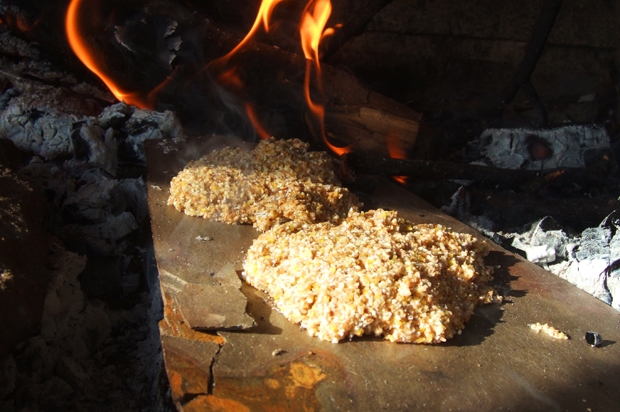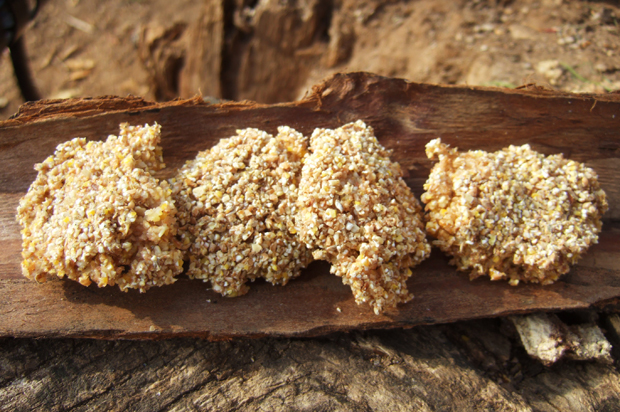 “Baking” prehistoric bread.
“Baking” prehistoric bread.
Finding a place to build an open fire is next to impossible in New York City, but it’s a must if you want to bake prehistoric bread.
Bread, in all its various forms, is the most widely consumed food in the world. Recent scholarship suggests that humans started baking bread at least 30,000 years ago. Prehistoric man had already been making gruel from water and grains, so it was a small jump to cook this mixture into a solid by frying it on stones. The National Academy of Sciences published a study that paleoanthropologists have found the remains of the starchy roots of cattails and ferns in mortar and pestle-like rocks (read about it here and here.) The roots would have been peeled and dried before they were ground into flour and mixed with water. Finally, the paste would be fried on heated rocks.
If you feel inspired to replicate this prehistoric recipe–like I was– I’ll warn you that Bob’s Red Mill does not make a “Cattail/Fern Blend Flour” (yet). Settle for a “10 Grain Breakfast Cereal” full of ancient grains, like millet, coarsely ground.
Then, visit your local home improvement store and poke around the slate tiling. You may be able to nab a few pieces of broken tile for free. That’s what you should do if you live in a major metropolitan area, like me. If you live somewhere normal, walk outside and pick up a flat rock.
Now, you need to build a big fire. That’s another thing that’s difficult to do in New York City. Fortunately, I have a connection with a historic site in Brooklyn that has an outdoor fireplace and bake oven. The site is surrounded by a park for tiny toddlers; it’s fun when they watch me cook, but it also makes me feel like I’m in Kitchen Stadium.
Let the flames die down until you have a bed of glowing, hot coals. Set the slate tiles on top of the coals, and wait about ten minutes. Combine three cups of grain with about a cup of water and mix into a thick, workable paste. Make the dough into half-inch thick patties and place them on the stones. After five minutes, flip them with a piece of bark and you’ll be amazed to see the grain is browning on the heated rock. They may stick, so if you have any wild boar’s lard–or something similarly appropriate–I recommend greasing your cooking rocks in advance.
 The results!
The results!
In about ten minutes, you’ll have a pile of hot, crispy cakes. The outside is crunchy and tastes like popcorn, the inside is moist and dense. I fed one to a passing park baby–she described it as “pretty good,” but maybe she was just being nice.
***
A portion of this article originally appeared on History.com
